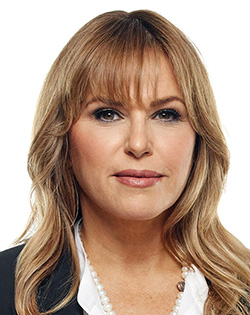

Schedule
8:00 AM - 9:00 AM
In today’s competitive environment, the total rewards strategy is most effective when it aligns with the organization’s inclusion objectives. This presentation explores the process of achieving alignment by offering tools, analysis and practical examples. Learn how to establish an understanding of the expectations for organizational inclusion, and identify how an organization’s total rewards strategy can act as a barrier to entry or serve as an on-ramp for attracting new and diverse talent. Gain the knowledge to effectively leverage your total rewards program to attract, engage and retain employees in an increasingly diverse workforce.
-
 Patricia Jesperson
Patricia Jesperson
9:30 AM - 10:30 AM
Benefits have been evolving through time and are currently having a renaissance for the attraction and retention of talent. Talent is harder to locate, there are skill shortages, and attracting a disproportionate share of great talent sets high performing organizations apart from their competitors. Join us for a deep dive into building modern benefit programs to meet the new realities of finding talent that are value driven and incorporate diversity, equity, inclusion and belonging (DEIB). These values will better inform plan sponsors and consultants on reprogramming benefits to meet modern demands.
Takeaways- Evolution of benefit landscape in Canada
- Value-based design options for benefit programs
- DEIB design options for benefit programs
-
 Cindy Hay, CEBS
Cindy Hay, CEBS
9:30 AM - 10:30 AM
Addressing employees’ questions about how to easily access their benefits and HR information is an ongoing challenge. Learn about NRG’s journey from the beginnings of a small benefits microsite to an Employee Experience Platform, including where they started, the problems they were trying to solve, how they got there, and how they continually measure behaviors and success. We’ll take a holistic look at how NRG’s PowerUp website became a one-stop shop for everything HR, providing employees with a single starting point to access all the information they care about, including benefits, compensation, payroll, new hire onboarding, total rewards and more!
Takeaways- The value of having an HR digital strategy to drive and support the employee experience
- Building the foundation of HR content transformation and how to have good governance to keep the content current and relevant
- How to be “future ready” for generative AI technology
-
Amie Smith-Murata
-
 Katharina Volker
Katharina Volker
9:30 AM - 10:30 AM
More than 400 class actions have been filed against fiduciaries of defined contribution plans in the last eight years, asserting claims of fiduciary imprudence for alleged excess plan fees or inadequate performance of investment options. This presentation will review the types of claims being asserted, the key fiduciary issues in these cases, and key court decisions on motions to dismiss and summary judgment. It will analyze several cases to learn how these cases are resolved, analyze what fiduciaries can learn from these cases, and conclude with best practices and lessons learned from the fiduciary imprudence cases to lower your plan’s chance of being sued.
Takeaways- A prudent fiduciary process will not eliminate litigation risk.
- The most effective way to reduce your plan’s fiduciary risk for recordkeeping
- The most effective way to reduce your litigation risk for excess investment fee and performance claims
-
 Daniel Aronowitz
Daniel Aronowitz
9:30 AM - 10:30 AM
Few chronic condition areas are as broad in treatment scope or as complex in potential cause as musculoskeletal [MSK] health, a perennial leader in risk and cost. Creating a comprehensive MSK strategy is no simple task, often bridging the work of employee benefits, health and safety, and property and casualty. Evaluating and developing a proactive approach to MSK health should take into consideration four primary strategy areas: foundational well-being, prevention and early detection, treatment access and cost, and treatment quality and appropriateness. Explore proven tactics and considerations benefits leaders concerned with MSK health need to be aware of.
Takeaways- What is MSK health? An overview of the risk spectrum, contributing factors, and impact of comorbidities.
- Considerations when selecting MSK solutions: organizational culture, demographics, job duties and more
- Understanding the full spectrum of MSK solutions, their interplay and how to efficiently create a holistic strategy
-
 Zack Papalia
Zack Papalia
10:45 AM - 11:45 AM
Even those who want to embrace healthy habits often struggle to convert good intentions into healthy behaviors. This session will discuss why knowing doesn’t always translate into doing, examine the cultural and organizational forces that undermine behavior change, and outline the key elements of successful lifestyle interventions. Beyond theoretical frameworks, we also need practical ways to apply these insights in our very nontheoretical workplaces. This presentation offers a grounding in the behavioral science as well as case studies applying these principles to traditional, hybrid and multi-site workplaces. It also includes a checklist of best practices to assess and improve any program or initiative.
Takeaways- Key elements of the health action process approach framework
- Determinants of self-efficacy and features of effective self-regulation
- Best practices for designing and implementing effective health/lifestyle interventions
-
 Monica Reinagel, MS, LD/N, CNS
Monica Reinagel, MS, LD/N, CNS
10:45 AM - 11:45 AM
Employers are investing heavily in health-related benefits, but is this investment paying off with healthier employees? In a first-of-its-kind research initiative, Fidelity HealthSM Thought Leadership surveyed doctors, nurses and mental health professionals to better understand clinicians’ perspectives on how benefits are working for employees. The findings are clear: Employers have myriad opportunities to improve the employee experience, such as preparing employees to discuss benefits with their doctors or providing more hands-on benefits education in the workplace. Capitalizing on these opportunities could increase employee satisfaction and maximize the clinical return on investment in these benefits.
Takeaways- Key pain points clinicians face with employer sponsored health benefits
- New opportunities to improve the employee experience with the health systems
- Practical strategies to consider to help clinicians more effectively treat patients
-
 Sarah Haflett
Sarah Haflett
10:45 AM - 11:45 AM
Benefits professionals have conquered COVID, the Great Resignation and the transition to remote work. Did these events leave any “marks” on companies’ retirement plan? Over the past three years, there has been rapid automation of business processes, including integration between employer HRIS systems, payroll systems and the retirement plan recordkeeping systems, along with increased turnover. This session will share some amazing findings from recent ERISA audits and will include what went wrong, how it was ultimately discovered and how the employer approached correction. Learn to spot irregularities and prevent or detect issues and keep in compliance with DOL regulations.
Takeaways- A checklist to self-review throughout the year to catch potential issues before the annual audit
- Important considerations when changing payroll software platforms or plan service providers and how to avoid costly issues during implementation
- How business acquisitions, plan mergers and plan terminations can impact the plan reporting and whether audits are required
-
 Crystal Coleman, CEBS
Crystal Coleman, CEBS
12:00 PM - 1:00 PM
Given how much sensitive data is at risk, it’s clear that no organization is immune to a cyber attack. Protection from data breaches requires ongoing vigilance, awareness and a collaborative team. It also requires a cybersecurity incidence response plan, coordination with federal and provincial privacy laws, and security standards best practices. These include breach notification requirements, recordkeeping and reporting, and reputation management and communication strategies. If vulnerabilities are discovered, learn how to address them, prioritize them and learn from the experience.
Takeaways
- Reviewing provider agreements and internal data storage practices to identify vulnerabilities
- How to review and select software, hardware and insurance policies dedicated to cyberattacks
- Critical steps to take when (not if) you experience a cyberattack
12:00 PM - 1:00 PM
In 2023, the Department of Labor issued long-awaited proposed guidance detailing the analysis health plans are required to perform and maintain to demonstrate that their mental health benefits are being provided in parity with their medical/surgical benefits. These proposed rules represent a sweeping change in approach and requirements with regard to any nonquantitative treatment limitations a plan may contain than had been previously understood. They include a number of new provisions, updated requirements and a new certification of the results of the analysis by a named fiduciary. This session will detail the proposed regulations and changes as well as areas that plans have identified as particularly challenging.
Takeaways
- Understand the new requirements for mental health parity
- Identify implementation challenges and solutions
- Develop a roadmap for compliance
12:00 PM - 1:00 PM
When it comes to the total rewards package you provide, it is not what employees get that counts, but what they keep after taxes. While both the 401(k) and HSAs have been available for decades, most small employers don’t offer either a 401(k) or HSA-capable coverage. Unless you offer both, where plan designs anticipate diverse financial capability/fragility, neither program by itself will deliver optimal value. This session demonstrates why 401(k) and HSA are better together, and how they combine to meet almost all worker financial resilience/ wellness needs.
Takeaways
- Why the HSA is oftentimes superior to the Health FSA and 401(k)
- Which should come first when it comes to saving—is it the 401(k) nest “egg” or the HSA “chicken”?
- Plan sponsors and workers can lower current expenses and save for retirement by using the 401(k) and HSA in tandem.
-
 Jack Towarnicky, CEBS
Jack Towarnicky, CEBS
12:00 PM - 1:00 PM
Interest in weight-loss drugs is impacting plans across the country. While the jury is still out their side effects and on their impact on overall health, it’s clear that some patients are experiencing remarkable results. In the face of the demand for these drugs, employers need a plan for how to manage cost growth and determine the most clinically valid coverage policies. Explore case studies that delve into drug efficacy, safety, and how plan sponsors can balance coverage and cost.
Takeaways
- What is known about these drugs and how they compare to one another
- Evaluating safety concerns
- Incorporating behavioral health programs in conjunction with weight-loss drug coverage
Pricing
ISCEBS or International Foundation Member
$1,495 through 8/01/25
Nonmember *
$1,690 through 8/01/25
New CEBS Graduate or New GBA or RPA Designee *
$1,250 / $1,400
* Includes a membership







